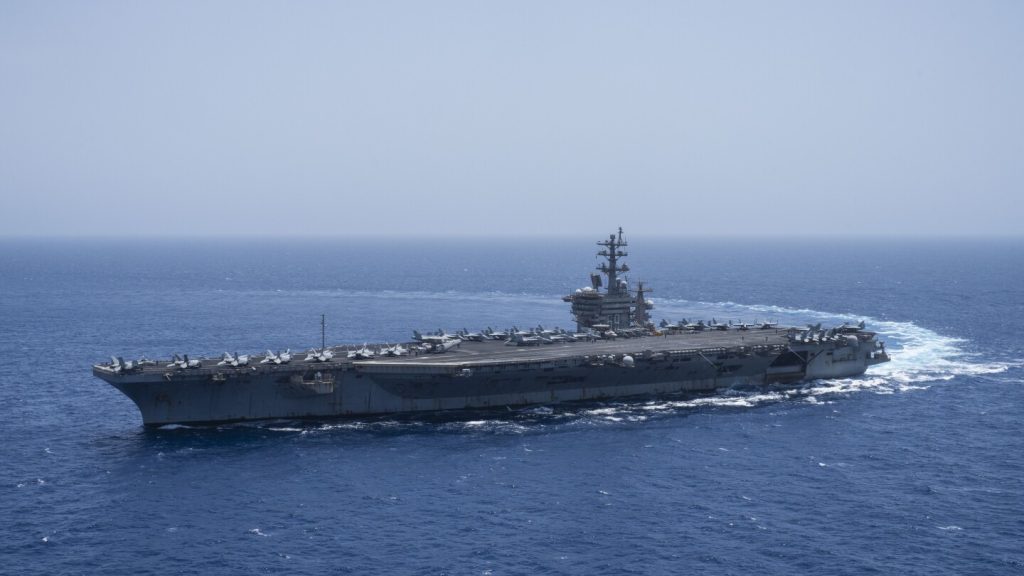Aboard the USS Dwight D. Eisenhower in the Red Sea, combat markings on an F/A-18 fighter jet reveal the intensity of the fight against Iranian-backed Houthi rebels in Yemen. With 15 missiles and six drones painted on the aircraft, the carrier and its strike group of about 7,000 sailors have been engaged in the most intense sea battle since World War II. As the deployment approaches its ninth month, sailors are feeling the fatigue and are concerned about the possibility of being ordered to stay out even longer to protect global trade in the Red Sea corridor.
The Pentagon is grappling with the decision of whether to bring the Eisenhower and its strike group home or extend their deployment at the request of U.S. Central Command. U.S. officials are considering various options with a decision expected in the coming weeks. Commanders in the Middle East argue for the presence of an aircraft carrier in the region as an effective deterrent against Iran and essential for unique war-fighting capabilities against the Houthi rebels. The carrier allows for flexibility and quick response options without the restrictions faced by Air Force aircraft based in the region.
Navy F/A-18s from the Eisenhower regularly engage in combat missions, targeting Houthi missiles and drones, as well as launching Tomahawk missiles into Yemen to destroy enemy targets. The absence of the carrier would require the U.S. to rely more on Air Force fighter jets based in neighboring countries, which may have limitations on offensive strikes due to regional sensitivities. Logistics and longer distances for fighter jet flights present additional challenges for maintaining combat power in the absence of the carrier.
Options for maintaining a presence in the Red Sea region include extending the Eisenhower’s deployment, deploying another carrier to replace it, or utilizing ships from other countries such as France or the United Kingdom. The strain on sailors and ships is a significant concern, with plans for counseling and post-traumatic stress treatment upon their return. The need for maintenance and repairs is also emphasized by military leaders to ensure the long-term readiness of the ships.
With only 11 U.S. carriers in operation and strategic priorities in other regions, replacing the Eisenhower in the Middle East poses challenges. While the USS John C. Stennis undergoes a major overhaul, alternative options may include deploying the USS Wasp, an amphibious assault ship carrying F-35 fighter jets capable of strike missions. The evolving situation in the Red Sea highlights the complexities of maintaining combat power and protecting global interests in a volatile region. A decision on the Eisenhower’s future is imminent, with implications for U.S. military presence in the Middle East.


